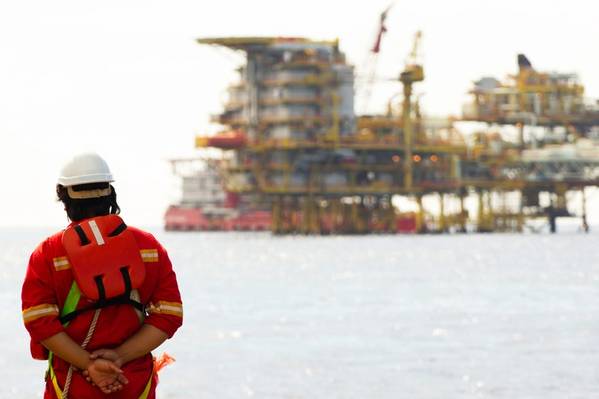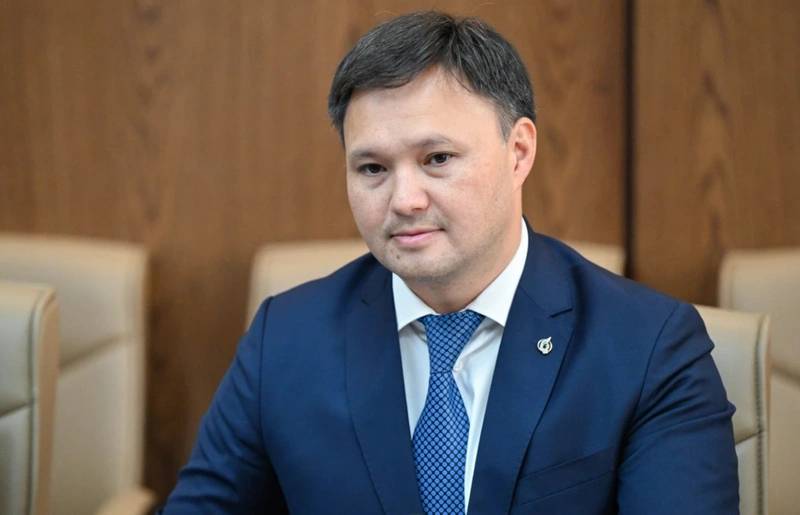
The following article is an op-ed piece authored by Askhat Khassenov, Chairman of KazMunayGas (KMG), Kazakhstan’s national oil and gas company, who discusses how KMG is positioning itself as a strategic global energy player by forming key international partnerships, expanding and investing in its assets, while maintaining commitment to sustainability through renewable energy projects and carbon reduction goals.
As global energy markets undergo profound changes, Kazakhstan’s national oil and gas company, KazMunayGas (KMG), is positioning itself as a key international player through ambitious goals, global partnerships, and a clear commitment to sustainability and innovation.
Established in 2002, KMG is Kazakhstan’s leading vertically integrated energy company. It accounts for approximately 26% of the nation’s oil production, 56% of oil transportation, and 80% of refining capacity, underscoring its central role in Kazakhstan’s economic structure. But beyond domestic achievements, the company’s growing international collaboration and forward-looking sustainability strategy have become increasingly prominent.
KazMunayGas is presenting Kazakhstan’s importance in global energy markets through strategic international partnerships and investment in critical infrastructure.
KMG manages significant stakes in world-class oilfields such as Tengiz, Kashagan, and Karachaganak, operated in collaboration with global giants including Chevron, CNPC, CNOOC, Sinopec, and others. In addition to these well-established fields, KMG recently initiated commercial development at the promising offshore Kalamkas-Sea field in the Caspian basin, highlighting its strategic positioning as a pivotal supplier within Eurasia’s energy landscape.
Further strengthening Kazakhstan’s export capabilities, KMG continues to diversify its oil transportation routes. Although the Caspian Pipeline Consortium (CPC) remains the country’s primary export channel, the company has successfully expanded shipments via the strategic Baku–Tbilisi–Ceyhan pipeline, exporting an additional 2.5 million tonnes over the last two years. This move aligns with global market needs for diversified and reliable energy supply routes.
 Askhat Khassenov, Chairman of KazMunayGas Credit: KMG)
Askhat Khassenov, Chairman of KazMunayGas Credit: KMG)
To further solidify Kazakhstan’s role as a reliable energy exporter, KMG has significantly invested in maritime infrastructure. Its maritime subsidiary, Kazmortransflot, achieved a record transport volume of 13.2 million tonnes of oil in 2024. Building on this momentum, KMG is collaborating with the UAE’s AD Ports Group to expand its fleet and adopt international maritime best practices.
Moreover, KazMunayGas recently agreed on the construction of two modern container vessels specifically designed for Caspian Sea operations, enhancing connectivity along the vital Trans-Caspian International Transport Route (TITR). TITR, also known as the Middle Corridor, is an important logistics artery linking East Asia and Europe through Central Asia and the Caucasus. Strengthening this route supports regional economic integration and diversifies transport options, reducing reliance on traditional shipping routes and enhancing supply-chain resilience.
Such infrastructure not only increases Kazakhstan’s logistical capabilities but also strengthens economic cooperation between Central Asia, the Caucasus, and Europe.
Petrochemicals and Decarbonization: A New Economic Frontier
Kazakhstan is now shifting from a raw material exporter to a producer of higher-value-added petrochemical products. KMG recently announced the construction of a major polyethylene production plant with a capacity of 1.25 million tonnes per year. Additional petrochemical projects, including future urea and PET (polyethylene terephthalate) plants, are expected to inject over $13 billion into Kazakhstan’s economy by 2030 and significantly boost employment.
To stimulate demand domestically and internationally, KMG established a dedicated project office for analysis and to promote polymer products used in construction, housing, agriculture, and infrastructure sectors. The company recognizes the global market potential for polymers, which are more environmentally friendly, cost-effective, and durable compared to traditional materials.
Aware of global climate concerns, KazMunayGas has also committed to a Low-Carbon Development Program, aiming to cut greenhouse gas emissions by 64% from 2019 levels by 2060, aligning with Kazakhstan’s national carbon neutrality goals.
A key step towards achieving these targets is KMG’s strategic partnership with the global energy major Eni to construct a hybrid renewable energy project in Zhanaozen, Mangystau Region. This project will deliver 247 MW of renewable power—combining solar, wind, and gas generation. The first stage, a 50 MW solar plant, will begin operations this year, followed by wind and gas facilities by 2026.
Additionally, KazMunayGas plans to introduce production of sustainable aviation fuels (SAF) and biofuels, addressing rising international demand for cleaner alternatives in aviation and transportation sectors. Feasibility studies for these projects have already been successfully completed.
Cutting-Edge Research and International Innovation Partnerships
To maintain competitiveness, KazMunayGas is actively investing in advanced research and innovation, partnering with leading domestic and international institutions. Recent initiatives include deep drilling operations (up to 5,500 meters) at promising fields like Turgai Paleozoic and Pre-salt Karaton, facilitated by Kazakhstan’s newly adopted “Improved Model-Based Contract” system, encouraging investments into complex exploration projects.
Moreover, KMG collaborates closely with international partners and local academic institutions on enhanced oil recovery (EOR) technologies, critical for extending production at mature fields. This collaboration also exemplifies the company’s commitment to applied research. These partnerships focus on critical issues such as reservoir management, corrosion prevention, and efficient exploitation of low-margin fields.
Through these targeted innovations and a comprehensive study of the development of gas deposits, KMG projects an additional 2.8 billion cubic meters of gas production annually by 2030, significantly bolstering the country’s energy security and export potential.
Balancing Energy Security and Sustainability
KazMunayGas demonstrates how a state-owned energy company can successfully balance global market ambitions with sustainability. Our international collaboration strategy, cutting-edge research initiatives, and strategic investments into renewable energy position it uniquely as both a key player in global hydrocarbon markets and a forward-thinking contributor to the energy transition.
Looking ahead, KMG is set to continue leveraging Kazakhstan’s geographic advantage as a critical energy bridge between Europe and Asia, strengthening its role as a reliable supplier of energy products while proactively contributing to global sustainability goals.
As energy markets evolve, Kazakhstan’s pragmatic approach—balancing fossil fuel production with ambitious sustainability commitments—positions KazMunayGas as a forward-looking energy company of strategic global importance.
This is an Op-ed article. The opinions expressed in this article are the author’s own and do not necessarily reflect the views or positions of Offshore Engineer.